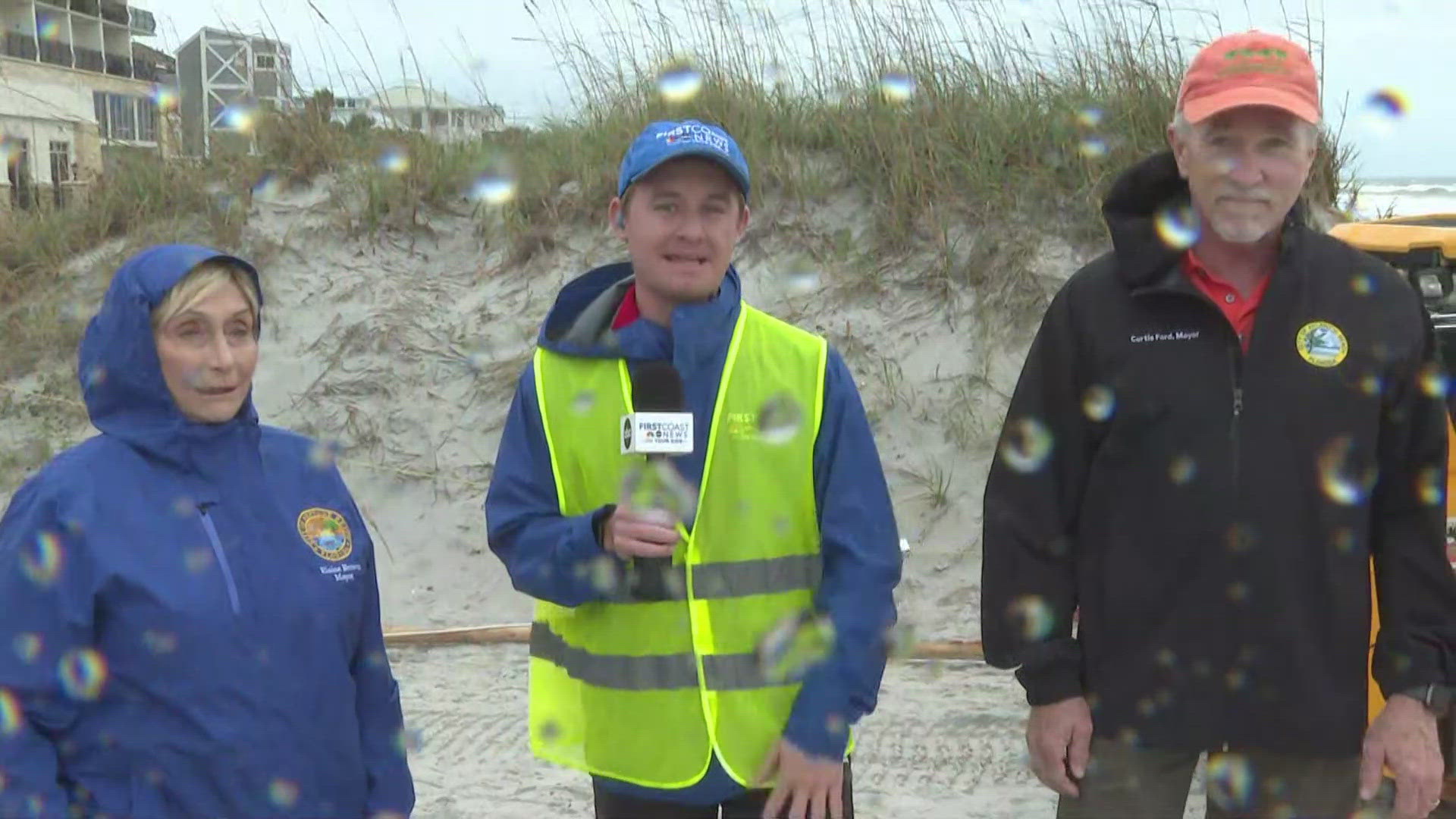JACKSONVILLE, Fla. — Sometimes the best way to fight water is with water.
That's the concept behind inflatable devices called Tiger Dams, the big orange tube-shaped barriers designed to block rising water. Tiger Dams have spread as a tool for emergency storm responses this hurricane season in coastal areas of Florida including Jacksonville.
The technology has been around for years but for the first time, state and local officials have talked about putting Tiger Dams at the Beaches where they could help block storm surges in spots that don't have tall sand dunes between the ocean and buildings.
The bright orange coloring and pipeline size of a Tiger Dam is eye-catching but the concept is fairly simple — the tubes are filled with so much water that they act as a heavy dam sealing off the intrusion of flood water.
The Florida Division of Emergency Management deployed the Tiger Dams in partnership with local governments during Hurricane Helene and has stepped up that outreach for Hurricane Milton.
Gov. Ron DeSantis has been touting the barriers after learning how they held off water during Hurricane Helene when placed around Manatee Memorial Hospital in Bradenton and a fire station in Tampa.
"The fact that you do that here and have no real water damage where those devices were deployed, that's a big, big deal," DeSantis said Sept. 30 in Bradenton.
He said in addition to helping safeguard critical infrastructure, the Tiger Dams possibly could be used to seal off residential neighborhoods from rising water.
An individual 18-inch high Tiger Dam weighs 50 pounds in a dry state but when water fills up the bladder technology, it weighs 6,300 pounds and is the equivalent of 500 sandbags, according to U.S. Flood Control, the company that makes the Tiger Dam in different sizes.
U.S. Flood Control says the barriers fill up quickly with no heavy equipment required to put them in place.
If necessary, the tubes can be stacked on top of each other to create an even higher barrier reaching a height of up to 32 feet, according to U.S. Florida Control. The individual tubes can be connected to create a miles-long wall after the storm passes, the tubes can be reused for the next weather threat.
Jacksonville Director of Emergency Management Andre Ayoub said the city has used the Tiger Dams before at a couple of fire stations and the next step is to put them at the Beaches.
"The first discussion when we met is to get those Tiger Dams — especially if we knew it's going to be a coastal event — to get those Tiger Dams out there," Ayoub said.
The city also is using the Tiger Dams to protect two lift stations in the San Marco neighborhood and at three fire stations: No. 11 on Talleyrand Avenue, No. 13 on Atlantic Boulevard and No. 23 on Ortega Boulevard.
Deegan and Ayoub have said during emergency briefings this week the state intended to install three Tiger Dams at spots in Atlantic Beach and Jacksonville Beach that would block storm surge from the ocean.
This story was first published by The Florida Times-Union.

